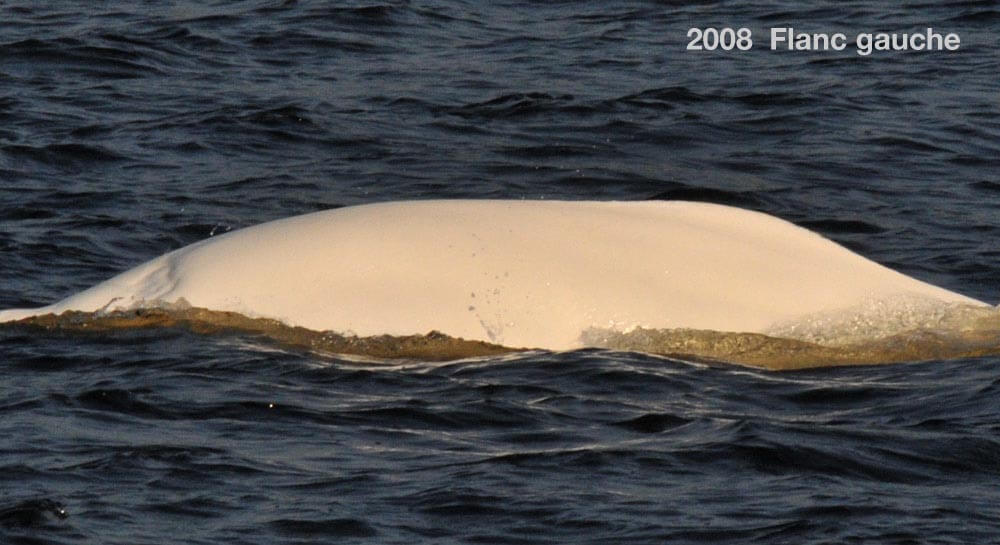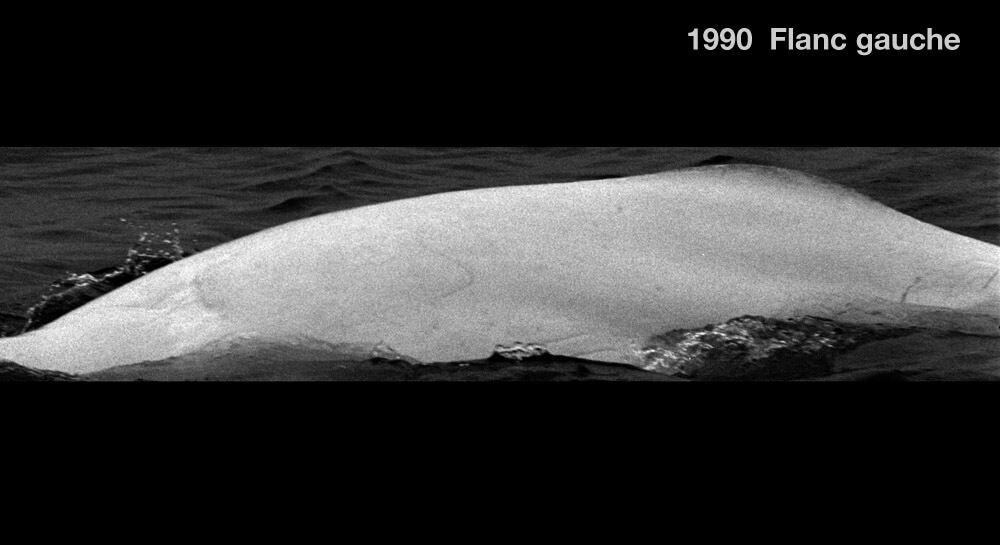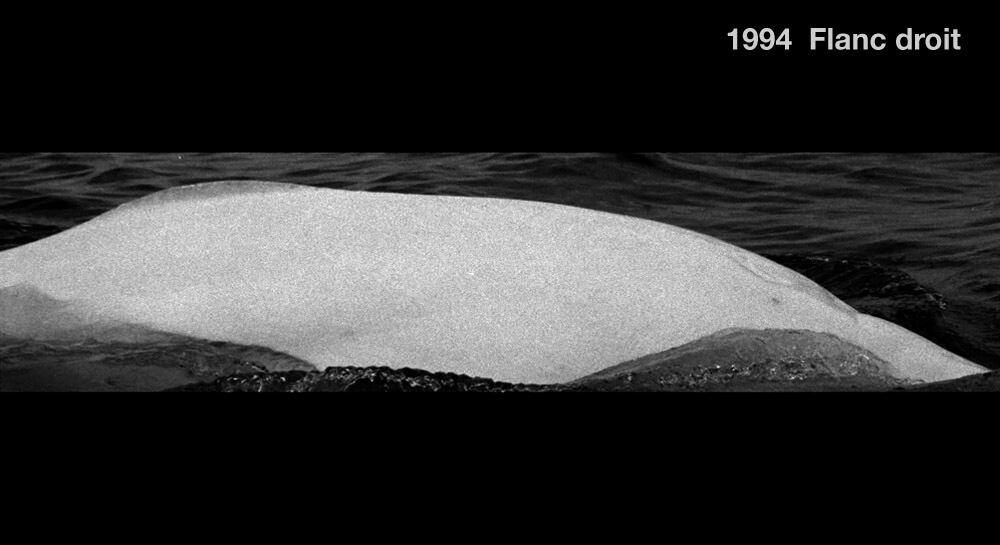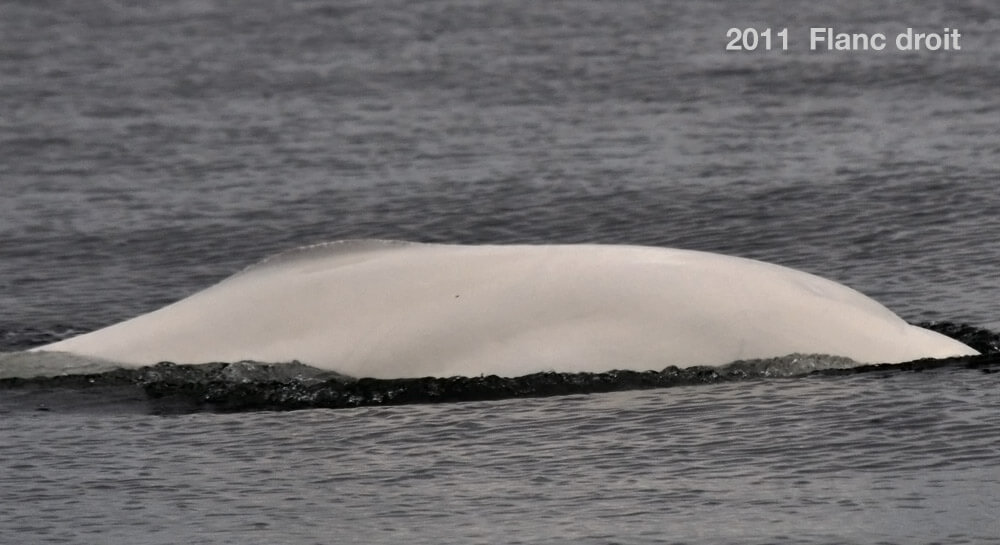Dance-Sea
Beluga


Adopted by Coralie and Roxane Mingard
-
ID number
DL0102
-
Sex
Male
-
Year of birth
Before 1977
-
Known Since
1989
Distinctive traits
This broad mark, just behind the head and extending to be visible from both sides, is Dance-Sea’s signature. His prominent crest also contains several small notches.
Life history
Dance-Sea was first observed in 1989. His “coat” was already immaculate white. He was therefore born before 1977.
His large size, habits and social affiliations clearly indicated that Dance-Sea was a male. On July 14, 1997, a biopsy confirmed this. Dance-Sea is a regular sighting in the Saguenay Fjord. He is part of one of two male networks in the Saguenay.
Dance-Sea’s scar may be the result of an encounter with a boat. Yet this male doesn’t seem to have developed a healthy distrust of gear. On at least two occasions, the research team was “inspected by a group of belugas including Dance-Sea ; the animals would stop very close to the boat for a few minutes. One of these encounters took place while Dance-Sea’s “godmothers” were aboard the research vessel. They were thus able to meet their protégé “in real life”.
Observations history in the Estuary
Years in which the animal was not observed Years in which the animal was observed
Latest news
We’ve just received a call from the Réseau québécois d’urgences pour les mammifères marins, informing us that a beluga carcass is adrift, east of the village of Les Bergeronnes. We headed for the area where the carcass had been sighted. We spot a beluga, but it’s not dead, it’s billowing (a word meaning it’s floating like a log). We recognize Dance-Sea. He’s not very energetic, he looks skinny and his breathing is slow. We decide to leave the area so as not to cause stress and disturb Dance-Sea’s resting behavior.
Sponsor
Coralie and Roxane Mingard adopted Dance-Sea (1993).





